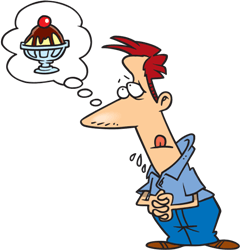Verbs with stative and dynamic uses
But really they aren't as difficult or as complicated as you may think.
The most important reason you need to know about these is because stative verbs can't usually be used in the progressive form. But more about that later!
Firstly, what do the words "dynamic" and "stative" mean?
They aren't very common words in everyday English, but they are grammar terms you will need to know to understand this subject.
"Dynamic" is an adjective which means something is moving or changing.
In English grammar a "dynamic verb" means that the verb describes an action rather than a state. Dynamic verbs are sometimes known as "action verbs."
In English grammar a "stative verb" means that the verb describes a staterather than an action.
Stative verbs are sometimes known as "state verbs."
The most important reason you need to know about these is because stative verbs can't usually be used in the progressive form. But more about that later!
Firstly, what do the words "dynamic" and "stative" mean?
They aren't very common words in everyday English, but they are grammar terms you will need to know to understand this subject.
Dynamic
"Dynamic" is an adjective which means something is moving or changing. In English grammar a "dynamic verb" means that the verb describes an action rather than a state. Dynamic verbs are sometimes known as "action verbs."
"Joe is chasing the bus."


Stative
"Stative" is an adjective which describes something as having a state, or existing (this is a very uncommon adjective).In English grammar a "stative verb" means that the verb describes a staterather than an action.
Stative verbs are sometimes known as "state verbs."
"Kevin wants some ice-cream."


Examples of dynamic verbs:
- love
- hate
- like
- prefer
- doubt
- seem
- know
- own
- understand
Examples of stative verbs:
- eat
- walk
- learn
- grow
- sleep
- talk
- write
- run
- read
- become
- go
Comentarios
Publicar un comentario